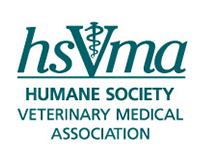|
Keeping the Recent Dog Flu Outbreak in Perspective
Friday, June 9, 2017
Barbara Hodges, DVM, MBA, HSVMA Veterinary Advisor
Recent outbreaks of canine influenza have been reported in the southeastern U.S., with some of the confirmed cases linked to patient participation in dog shows in Georgia and Florida in May. Cases have also been reported recently in Tennessee, Illinois, Kentucky, Missouri, North Carolina, South Carolina, and Texas. In total, canine influenza has been reported in at least 30 states nationwide.
The Humane Society Veterinary Medical Association (HSVMA) cautions dog owners to be watchful for signs of this highly contagious airborne disease, which can cause an acute respiratory infection and--in a small percentage of cases--can lead to serious illness, particularly secondary pneumonia, and even death. There is a 10% mortality rate among canine flu patients.
Below are answers to some commonly-asked questions about canine Influenza:
- What causes canine flu?
An H3N2 variant of the canine influenza virus has been isolated as the cause of the current U.S. cases. H3N2 was first detected in the U.S. in 2015, with cases in North Texas, Midwest states and most notably in the Chicago, Illinois area. This canine flu strain does not appear to be contagious to people, although, in rare instances, cats can be infected with it.
- What are the signs of a canine flu infection?
Mild cases may present with a dry, hacking cough (which can be confused with Kennel Cough), ocular and/or nasal discharge, lethargy and decreased appetite. Rare cases can worsen and become severe—generally due to the development of secondary pneumonia. In these cases, signs may include severe lethargy, high fever, anorexia, and a deep, raspy cough.
- How is canine flu spread?
The canine influenza virus is in the respiratory secretions of an infected dog, so close contact with an infected animal who is coughing or sneezing can transmit infection to a susceptible animal. Contact with humans who have handled an infected dog and not properly washed their hands, and contact with objects that an infected dog has played with (a ball or a toy) can also lead to infection.
- Can I or my other pets catch the canine flu?
The virus has not been shown or reported to infect humans; however, infection of cats has been reported.
- Can I transmit canine flu to my dog?
Handling or patting an infected dog or his or her toys or equipment (bowls, collars, leashes, crates, blankets), followed by contact with your dog can lead to infection of your dog.
- Is canine flu the same as Kennel Cough?
Several infectious upper respiratory diseases are collectively called “Canine Infectious Respiratory Disease" or CIRD, including Kennel Cough and canine flu. Many cases currently being diagnosed may not actually be cases of canine influenza. Several of these diseases, such as Parainfluenza and Adenovirus, are routinely vaccinated against as parts of the combined distemper vaccine. Many dogs also regularly receive a Bordetella vaccination (commonly referred to as the Kennel Cough vaccine) if they frequent areas where dogs concentrate, such as boarding kennels, doggie daycare centers, grooming salons and dog parks.
- How is the official diagnosis of canine flu made?
The only way to definitively diagnose canine flu is by sending a patient sample (swab of secretions) to a diagnostic laboratory (i.e., Cornell University). This service can be fairly expensive. Furthermore, a confirmed positive canine flu test will not change the medical treatment plan recommended for an infected animal. For this reason, it may be difficult for many pet owners to justify the additional diagnostic expense.
- How is canine flu treated?
Not all dogs with a case of mild canine flu require treatment. All of the diseases in the collective Canine Respiratory Infectious Disease (CIRD) complex are treated the same way—they are given “supportive treatment,” using fluids and possibly cough suppressants while the virus runs its course. Antibiotics should be used only when there is an indication of or concern about secondary bacterial involvement.
- Is there a vaccine for canine flu?
Yes, a commercial vaccine against the H3N2 canine flu strain is available for dogs, and requires a second shot—a booster—2 weeks after the initial vaccine. No canine flu vaccine has been approved for use in cats.
- Should I have my dog vaccinated?
This is a question for you and your veterinarian to decide jointly. The vaccine should only be considered for healthy dogs older than 8 weeks of age. A lot depends upon your individual circumstances and your dog’s health. If the vaccine is given, protection reaches its full effect within 7-14 days of the booster shot. Therefore, for maximum benefit, contact with other animals should be avoided until then.
In the meantime, it is wise to be diligent in monitoring your dog. Report any respiratory signs or issues to your veterinarian and avoid dog parks or areas where dogs congregate. Consider discussing the possibility of vaccinating your dog before any issues develop since vaccination must be done well in advance of exposure to provide effective protection.
##
|
